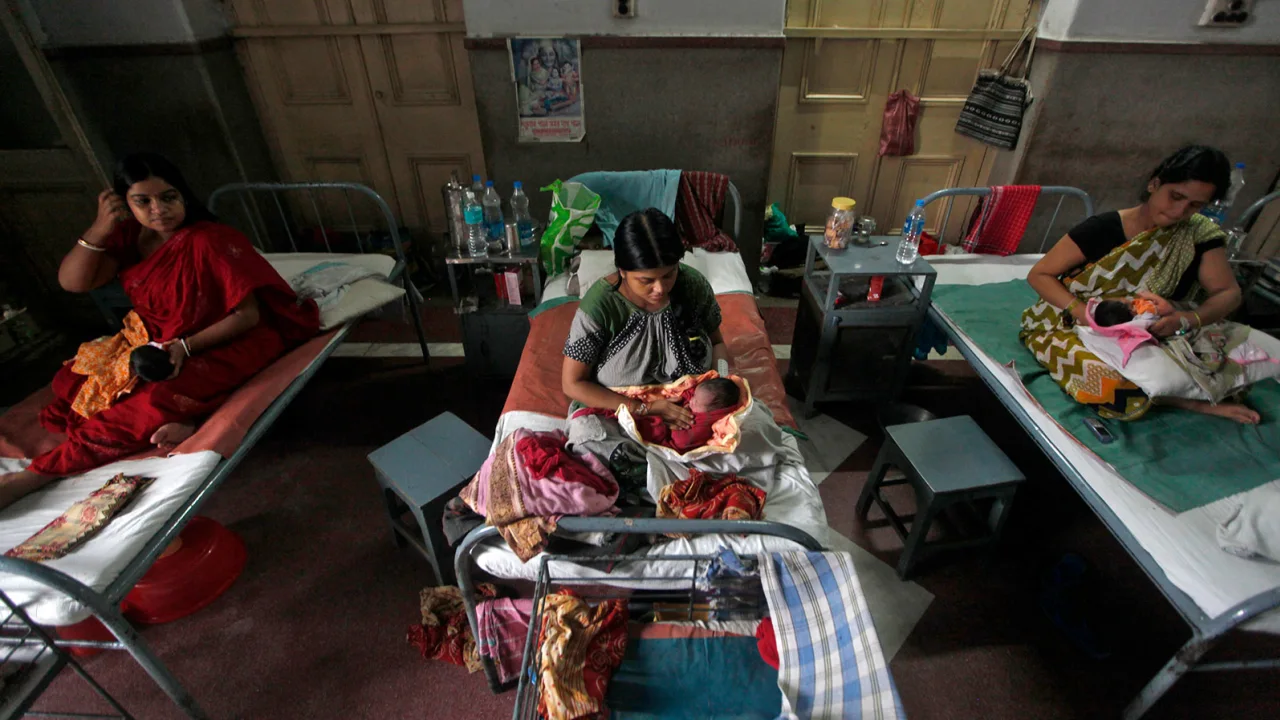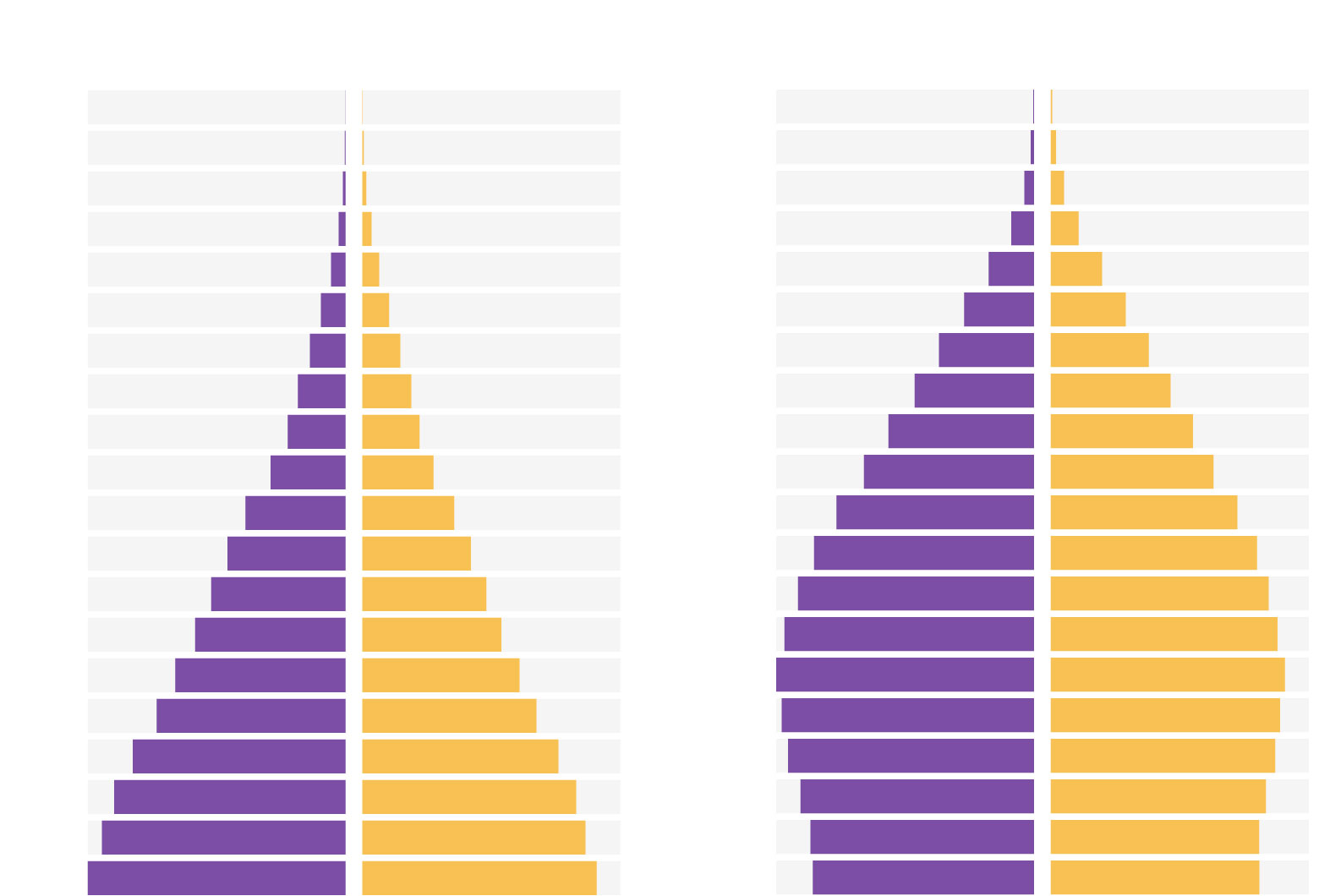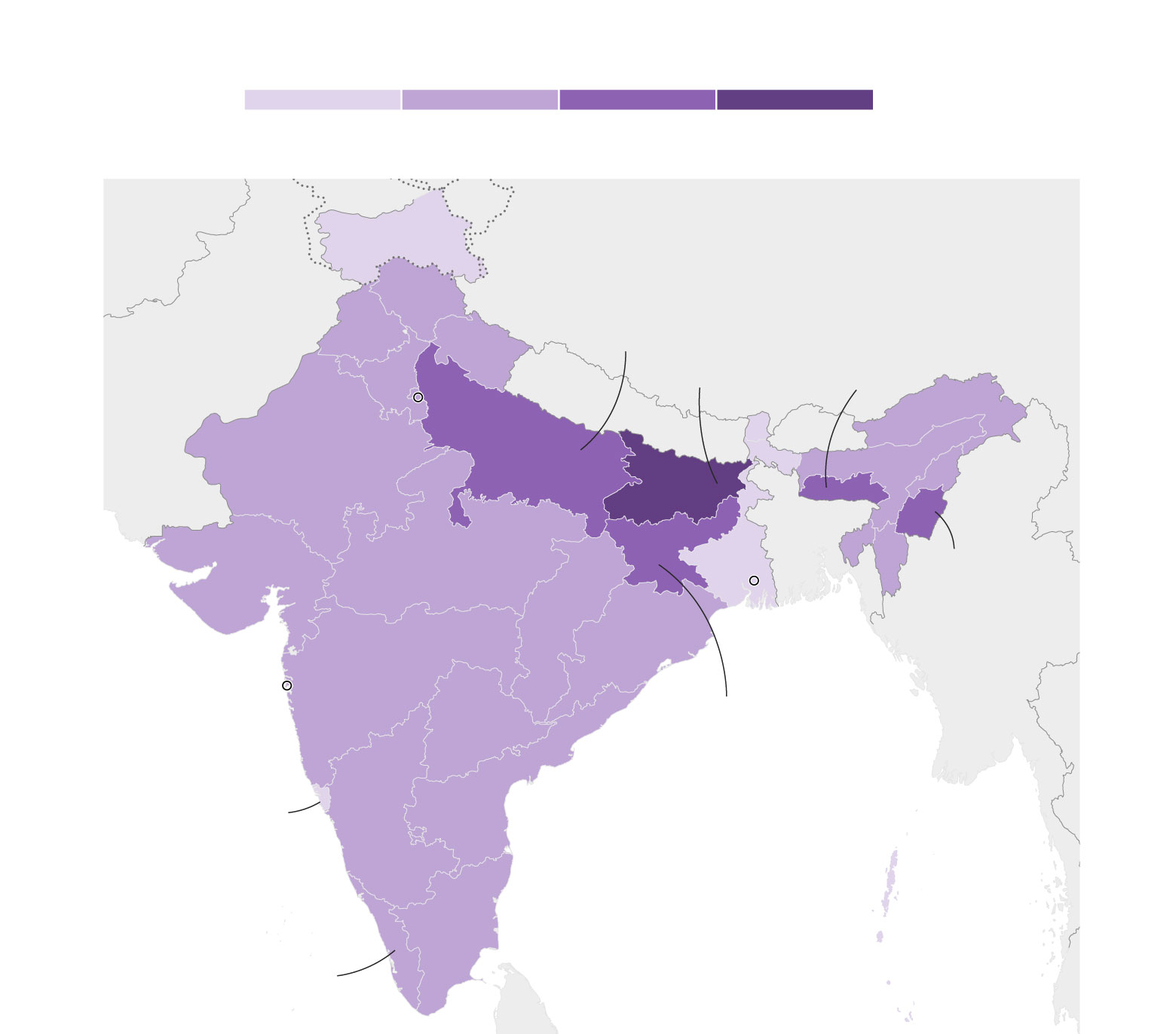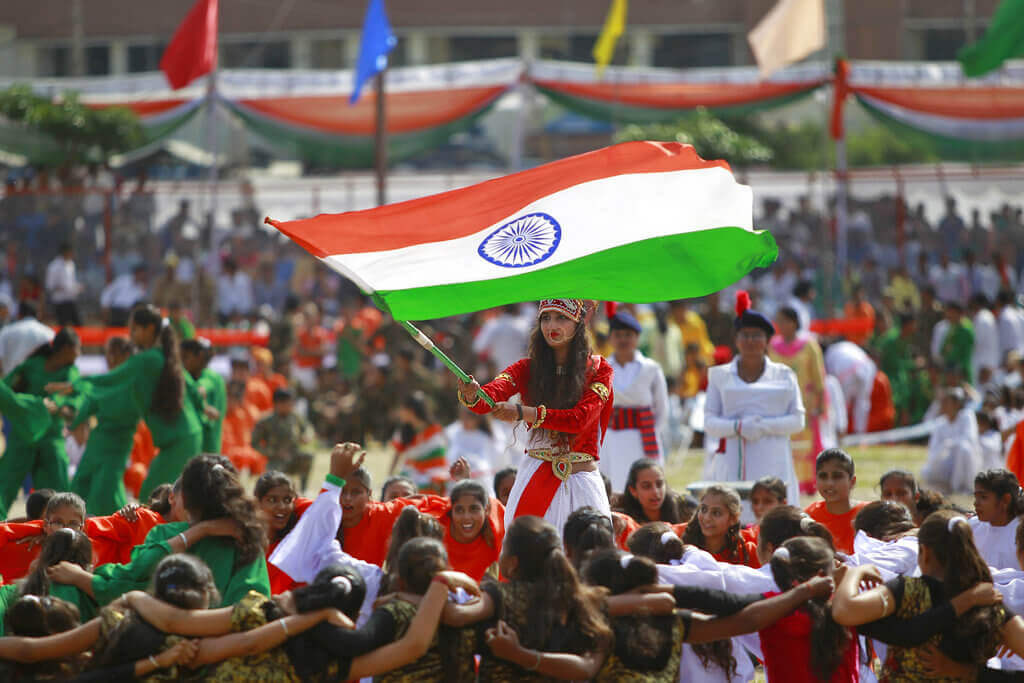News
India Surpassed China In Population: What Lies Ahead For India?
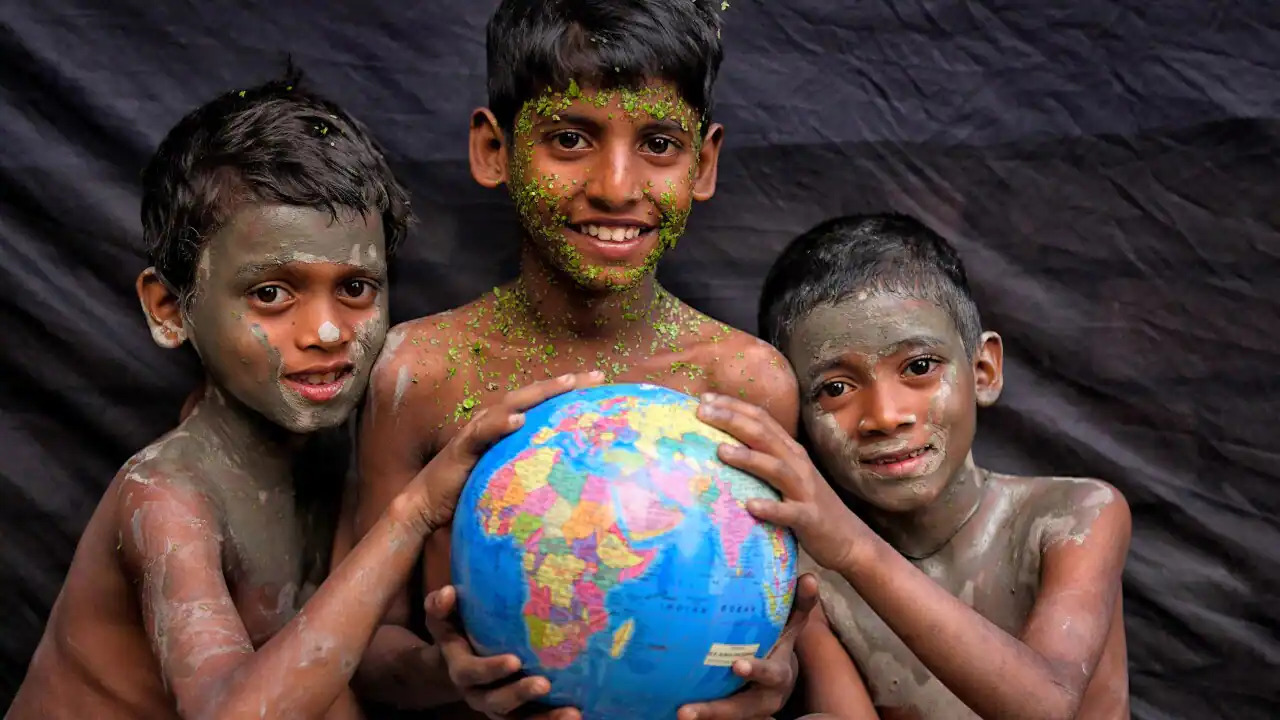
(CTN News) – Counting millions of people is never an easy chore, but according to the United Nations’ most recent estimations.
India will surpass China in population by the end of this weekend, signaling a historic shift in the world’s demographics.
The majority of the globe grew up believing that China was the most populated nation, yet decades of stringent laws requiring just one child per family drastically reduced China’s birthrate, giving India the advantage.
However, the majority of nations do not necessarily aspire to have a chart-topping headcount.
A few years ago, Prime Minister Narendra Modi expressed concern about India’s “population explosion” and praised families for carefully weighing the effects of having more children – both on themselves and the country.
“In India in the twenty-first century, the capacity to realise dreams begins with a person, begins with a family. “Neither the home nor the nation can be happy if the populace is not educated and healthy,” Modi stated.
What caused India’s population to grow so quickly, and how long will it continue?
CNN examined statistics from the UN’s World Population Prospects and consulted with specialists to go behind the headline figures and examine the specifics of India’s demographic change.
Why Did India Become So Big?
Fertility is crucial to understanding what causes a country’s population to increase or decrease, which is not surprising.
It is generally acknowledged that for a nation’s population to maintain itself and even increase, the average fertility rate, or the number of children per woman, must be 2.1.
India’s fertility rate in the 1960s, when the grandparents of today’s generation were having children, was 6, or about the same as certain African nations presently.
The total fertility rate in India, however, decreased to 2.0 in the most recent national evaluation period from 2019 to 2021, down from 3.4 in 1992–1993.
The concept of “demographic momentum” helps to explain why the population is growing despite a decline in birth rates.
“The population grows for several decades after the fertility rate falls. Frank Swiaczny, a senior researcher at the Federal Institute for Population Research, explained that this is the case because younger, larger cohorts are still maturing into the age when they become parents.
Due to the significant number of women entering their reproductive years, India’s population will thus continue to expand slowly even with a replacement or sub-replacement fertility rate.
India’s unequal fertility rate across the country contributes to a north-south divide where more children are born in the north, which is not unusual for a country of its size. However, even there, the figures aren’t astronomically high.
“What really surprised us is that the highest fertility rate in India — 3.0 in Bihar — is not even that high,” said Barbara Seligman.
Chief strategy and growth officer and senior vice president at PRB, a nonprofit organisation that focuses on demographic information and population studies.
“It is really striking to see just how many states are below replacement level,” Seligman continued. Except for five states, all of which are in the north (Bihar, Meghalaya, Uttar Pradesh, Jharkhand, and Manipur), are at that level.
A separate pattern appears in the southern states.
For instance, Goa’s fertility rate is comparable to that of some southern European nations that are currently having trouble keeping up with an ageing population and a declining labour force.
Experts advise India’s leaders not to disregard this trend.
India is now considered to be a “ageing society” by the UN, which means that 7% of its citizens are 65 years of age or older. In other regions, like Kerala in southern India, where 12% of the population is over 65, that number has doubled in the past 30 years.
Given the low overall fertility rate, the same pattern will spread to more states.
Over the course of the next 30 years, “we’re going to see more and more states ageing in the way that Kerala is now,” Seligman predicted.
India’s Population Is Growing Less Quickly
India’s population may have surpassed China’s overall, but according to UN figures, the country’s growth pace has halted.
India’s population grew by 2.2% year on average between 1971 and 1981. That had slowed to 1.5% by 2001 to 2011, and it is even lower now. India’s population is anticipated to reach its peak in 2064 at roughly 1.7 billion, according to UN estimates.
According to UN figures, the country’s predicted median age in 2023 would be 28 — over a decade younger than China’s. Currently, more than 40% of the population is under 25.
According to the Organisation for Economic Cooperation and Development (OECD), India has more than 900 million people of working age in 2021, and that number is projected to rise to 1 billion over the following ten years.
The country is a huge lure for Western businesses looking for an alternative manufacturing base to China because of its large, young, English-speaking, digitally educated, and reputation for entrepreneurship labour force as well as its low wages.
However, it is anticipated that India will contribute less to the proportion of the world’s working-age population in the coming decades, making room for a younger generation of workers who will be leaving Africa.
Although India may have the majority of people in working age today, experts say the country needs strong policies to take advantage of its youth.
According to Sonalde Desai, director at the National Council of Applied Economic Research (NCAER) and professor at the University of Maryland, “a large number of people is not enough; we need to develop a comprehensive plan.”
“We need an economy that creates these high-value jobs as well as people with the skills to fill some of the high-value jobs.”
The Population Foundation of India’s executive director, Poonam Muttreja, stated that closing the gap is “imperative for India to progress to fulfil its aspirations of being a developed country.”
What Lies Ahead For India?
India is climbing the global economic league tables while still having one of the lowest per capita incomes in the world; its approximately $3.5 trillion economy is now the fifth largest and one of the fastest growing in the world.
The World Bank predicts that India will outperform all other major economies in 2023 with growth of 6.6%, compared to China’s 4.3% and the United States’ 0.5%.
According to some projections, India is also predicted to overtake China as the world’s third largest economy within the next 10 years and be the only third country to reach a GDP of $10 trillion by 2035.
India Has Prospered, But Its Wealth Is Not Distributed Equally
Millions of Indians continue to live in poverty, and analysts claim that despite the country having a sizable population of young people who are ready and prepared to work, compared to other nations, statistics reveal that there aren’t enough jobs for them.
The issue is greater in economically underdeveloped northern regions that mainly rely on agriculture. For instance, Uttar Pradesh, which is home to 17% of India’s population, only possesses 9% of the nation’s industrial jobs.
Although India may have the majority of people in working age today, experts say the country needs strong policies to take advantage of its youth.
According to Sonalde Desai, director at the National Council of Applied Economic Research (NCAER) and professor at the University of Maryland, “a large number of people is not enough; we need to develop a comprehensive plan.”
“We need an economy that creates these high-value jobs as well as people with the skills to fill some of the high-value jobs.”
The Population Foundation of India’s executive director, Poonam Muttreja, stated that closing the gap is “imperative for India to progress to fulfil its aspirations of being a developed country.”

